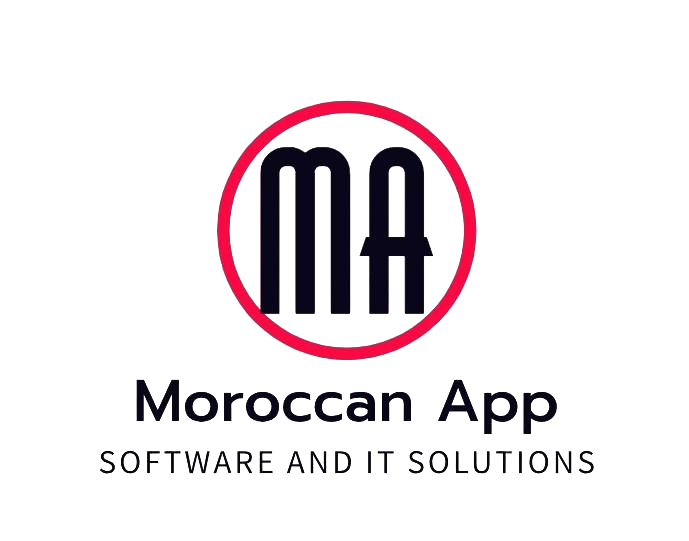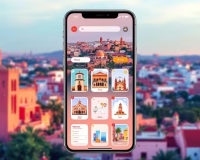- Mon - Sat 8:00 - 17:30, Sunday - CLOSED
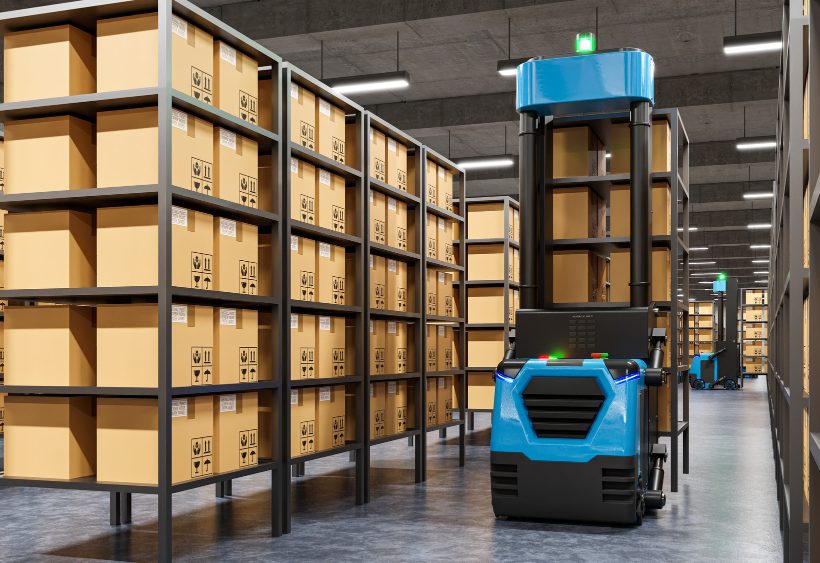
Tips for optimal stock management
Inventory management is strategic for any business, industry or trade. It represents an organization of your flow, thought, which can generate significant savings and a very interesting return on investment. But this goes beyond the financial aspect: managing your stocks and supplies as best as possible, responding to customer demand, this has a positive impact. Discover 6 tips to improve the management of a warehouse, store or warehouse. What is inventory management? Inventory management consists of: to control the entry and exit of goods, to ensure product availability when ordering to fill stock that is not too expensive for the company to avoid waste and loss as much as possible. What are the risks of poor inventory management? Companies are not paying enough attention to inventory management risks: poor management of increased labor requirements, delays in preparation and delivery times, organized storage space, misuse or suboptimal use of equipment , work accidents, loss, waste and breakage They also risk seeing their competitiveness in the market diminish, in favor of an organized store or warehouse. The challenge here is to find the balance by overstocking and calculating safety stock. The risks associated with overstocking It may seem like a good idea to “plan big” and mitigate any risk of shortages, but overstocking also has its drawbacks: it requires greater storage and therefore costs more; due to the quantity stored and managed, more will be organizationally expected; Finally, there is a risk of obsolescence for unprocessed stock: one reference may be that of another, leaving behind the company’s oldest stock. Barcode technology plays an important role in automated warehouses. Barcode printers and readers are relatively expensive and can be integrated into warehouse operations. This significantly reduces manual entry errors that occur in a warehouse or store.

How to Choose Your Business Management Software?
DEFINITION the commercial activities of the company. This management software is part of the ERP and/or CRM. Commercial management software that centralizes all information It maximizes the automation of tasks linked to the stages of Customer Relationship Management: research, sales, delivery, invoicing, It collects key data related to these stages by providing real-time statistics tables for analysis Some tools go further and offer functions: for example, for project management or software component accounts to record accounting entries, expenses, etc. In fact, thanks to this type of CRM tool you manage the company’s commerce making it more flexible and obtaining a sophisticated vision of For information: the sales management solution – called CRM – is focused on the sales department. In contrast, ERP software, also called integrated software package, is a central information system that covers all of a company’s services. Management is done via this one and only tool that is the ERP. Management software packages are generally installed according to the management process that has been put in place by the company. HOW TO CHOOSE BETWEEN BUSINESS MANAGEMENT SOFTWARE The distinction and choice between the two types of software must be made taking into account the needs of the Does the company need to optimize its entire business process? Does this just optimize unpaid billing and recovery? Does she want software that allows her to cover the entire process but without the admin part? Will its development in the near future lead it to choose software capable of adding functions as it grows? After identifying its business needs, the business strategy function can evaluate software actions to select the type of software It is essential to know how to choose the right commercial software for the company, most of which, although they offer integration of commercial functions, nevertheless have the upper hand. Therefore, it is very appropriate to find out about the functionalities of the different software, because depending on their functionalities and the price charged, your company may not be interested in software with highly developed CRM functions, you mainly want to have access to software for example. HOW TO DETERMINE YOUR NEEDS? To help you determine your specific needs, we recommend hiring an expert. This professional will provide you with an outside perspective and decision-making assistance; namely choosing business software adapted to your economy and your organization. Before choosing your solution, it is important to clearly identify your needs and your objectives. To do this, you must provide answers to the questions: What features are necessary for your business to run smoothly? What are the specificities of your activity or profession? Which additional management module is right for you? What is the size of your company ? What will be the acceptance rate of your teams? Do you need a commercial management module to collaborate with certain people? What are the user’s preferences? In any case, you will have understood, commercial management software or simply invoice automation is a performance lever, both for VSEs, SMEs and for VSEs/SMEs. It allows you to manage your operations with much more flexibility and responsiveness. You definitely win!
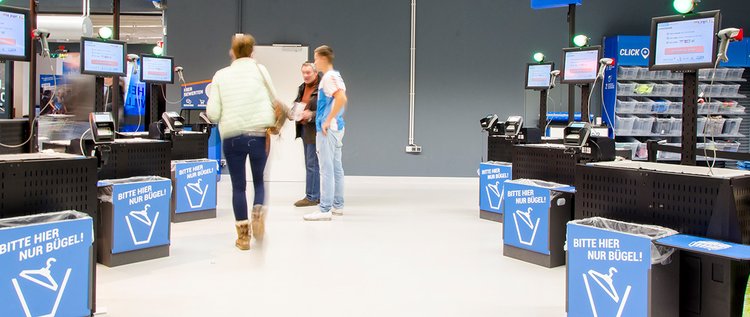
How to save time with RFID chips?
Will the advent of RFID grading shift to barcodes and lead to the demise of in-store payments? In fact, articles are increasingly labeled with RFID. Some brands such as the famous French sports brand have started to equip their automatic checkouts with RFID sensors which make the calculation of the amount instantaneous. The reason ? RFID technology greatly facilitates inventory within businesses, the consumer experience and an incredible time saving for customers. Simplify the activities of employees in business RFID tags are increasingly used in stock management and inventory. RFID tags offer extremely reliable data readability. The RFID chip carries the same SSCC code found on conventional tags and provides a powerful, blind-searchable read source. This is exactly what the weak point of barcode printing can be affected by the wear and tear of time. RFID chip increases productivity exponentially If a barcode can only be read from and individually, many RFID tags can be read both at a time and at a distance. It is the size of the antenna which is suitable which determines how far it can be A racket reads tens of centimeters away while the gantry can read in a warehouse, tens of meters away. RFID technology for intelligent inventory management Barcode reading, in terms of related information, is 80% reliable, while RFID has a much higher confidence rate in the order of 1%. With RFID, store status can be obtained at a rate that far exceeds the performance of manual counting at very limited variable costs. Easier logistics <ul”> When measurement points are established in stores, delivery tasks are systematized and automated. This has the effect of making the counting and quality of receipts more reliable, which is essential for reducing disputes with suppliers. Save your customers time RFID technology makes life easier for customers. No waiting in long lines. It will no longer be a matter of reading barcodes one by one. A reader equipped with RFID technology can read hundreds of tags per minute. What are the benefits for the company’s customers? We see in our national sport casting when a customer puts in a bin, all their screens will display the content at the same time with the total owed. At Nespresso, you no longer need to empty a bag of coffee capsules. The bag containing the capsules is positioned in front of the reader, the invoice is immediately drawn up. So, whether you have one product or a hundred products, it only takes a few seconds to pay for your purchases. The reign of long queues is coming to an end. </ul”>
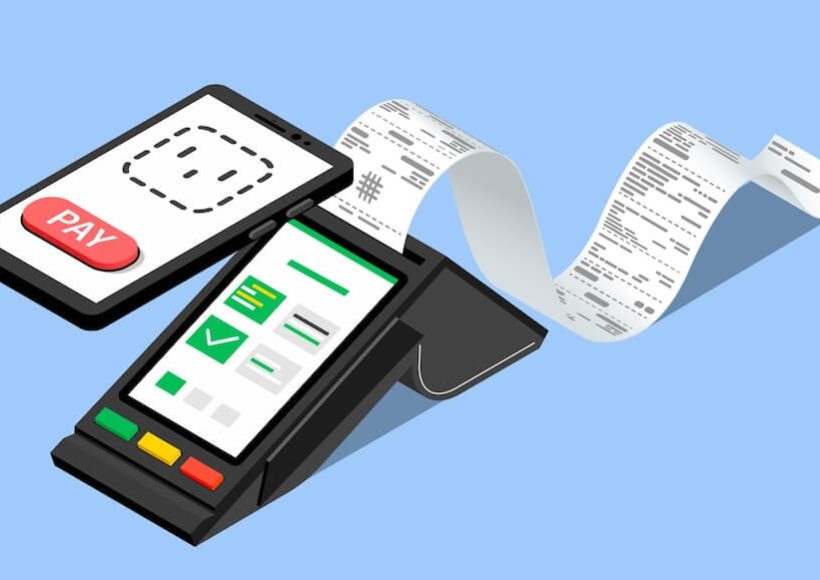
What is the future of RFID technology?
What is RFID? RFID technology is on track to make significant advances, fueled by what analysts say faster growth in healthcare, retail, food safety and The future of RFID is growing and growing as more industries and businesses invest in the technology. As a result, RFID is becoming more cost-effective than ever to solve real-world business challenges. Analysis And Forecasts Analysts have predicted a boom in RFID adoption over the past decade. however, the market has been growing slowly and steadily. However, a report from Research and Markets predicts that the global RFID tag will achieve a compound growth rate of 22.4% through 2018. However, another report estimates that the smart market will reach $10 billion by 2020. Some experts estimate that the RFID tag market alone will reach nearly 7 trillion tags next year, primarily due to retailers adopting UHF RFID tags to replenish their inventories. This number is expected to reach 25 billion labels for clothing and footwear alone, with more labels deployed on high-value and highly complex items. Experts also predict rapid growth in the use of RFID in the pharmaceutical market for applications Innovative Manufacturing Will Create Durable, Versatile Labels Advances in printed electronics have resulted in extremely thin and flexible layers of RFID tags that can be combined with printed sensors, printed batteries, thin-film photovoltaic solar cells and other technologies. With new electronic printing technologies and conductive inks, businesses can print their own RFID tags without being on their website. Some companies are also working on 3D printing technology to directly print the electronic components of products as they are rendered. Directly printing an RFID tag on a product can take years, but the technology is evolving quickly to make it happen. New Antenna Designs Could Increase Range The key to the card’s performance lies in the antenna design. It is the antenna that helps determine where and how the tag can be used and how it will perform. In the coming years, new antennas and to be expected, because the competition for RFID antennas is increasingly fierce. Increased Memory Will Create Hot Tags Integrating intelligence into the tag and, by extension, the asset being marked is another key activity. Expect tags with more memory and lower cost to enable these “smart” applications. High-value assets will be an early application for this technology, as the cost of these assets will make it easier to amortize the increased cost of more robust tags. Use Sensor Integration to Streamline Your Business RFID will increasingly become part of the sensing and communications technologies that help businesses better monitor and manage assets and shipments. Passive sensors for temperature, humidity, pressure, vibration and other factors will combine with RFID to provide even more intelligence to the company’s advantage. Final Thoughts and Takeaways The RFID industry is about to enter an exciting phase in which adoption will empower technology providers to invest in exciting new innovations. Along with the new developments described above, advances in materials, organic polymers, nanotechnology and others will change the way RFID is integrated into products. For example, a label with an RFID transponder could be printed directly on the packaging using a biodegradable conductive ink. The future of RFID is here. RFID end users and manufacturers must be ready to exploit these new technologies and adopt broader use of RFID.
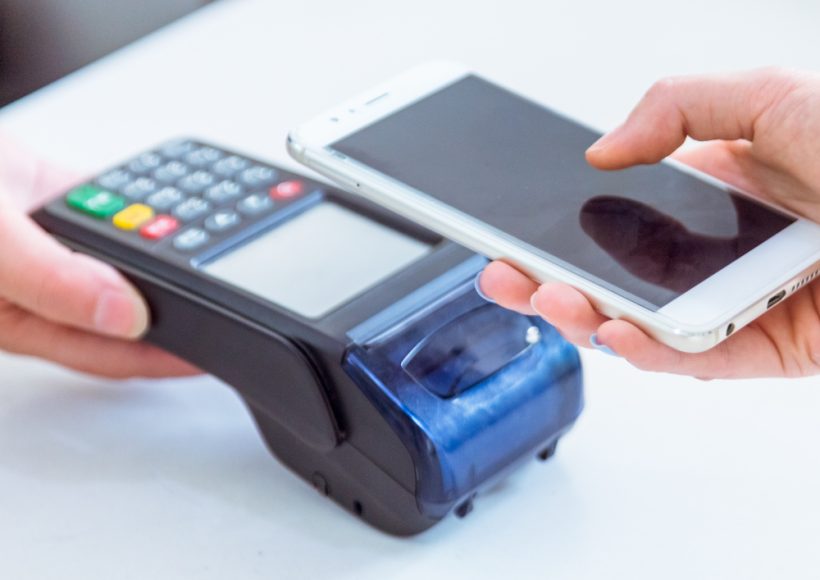
Understanding RFID Technology
With the proliferation of RFID products, there is a clear understanding of how the technology works and how it works best. How does the technology work? What is the most effective support depending on its use? Which chip to choose? To determine your place among the vast selection of media and chips, here are some simple answers SBE answers: What is RFID? We use RFID products every day without knowing it: through traffic cards, store locks, RFID badges, badges or, more recently, contactless car keys. This technology has the advantage of saving the user time and allowing rapid reading But do you really know what RFID is? RFID or re-Radio Frequency Identification is a method of storing and retrieving data to The system is activated by transmitting electrical energy from a radio tag and RFID transmitter. The radio tag is made up of an electronic chip and an antenna, the radio signal emitted by the reader also uses RFID technology. Components can both read and respond to signals. RFID chip or NFC chip? NFC stands for near field communication. NFC is also based on RFID protocols. The main difference with RFID is that a device can act not only as a reader, but also a tag. In “peer-to-peer” mode, it is also possible to transfer information between two NFC devices. The NFC system operates on the same frequency as the HF RFID system. There is therefore only a limited reading range for short distances. Due to these limitations, NFC devices must be very close to each other, usually no more than a few centimeters. This is why NFC is often used for secure applications, notably for access controls, or used for contactless payments. Due to these limitations, NFC devices must be very close to each other, usually no more than a few centimeters. This is why NFC is often used for secure applications, notably for access controls, or used for contactless payments. What frequencies for what reader distances? The frequency is the characteristic that establishes the connection between the chip and the antenna. So not all chips on the market have the same functionality. The chips themselves differ widely in operating mode and reading distance. The higher the frequency, the greater the magnetic distance. Depending on these factors, the chip will be less powerful and more expensive. Several manufacturers share the market and offer more and more efficient ones. This technology is now standardized and present in a large part of daily life. Discover our 2 RFID readers: The UFH RFID reader can quickly read badges, tags and other RFID transmitters indoors and outdoors remotely. The USB RFID reader is suitable for rapid contact reading of high and low frequency badges and tags. The RFID chip, active or passive? This technology is available in three versions: Passive RFID Semi-passive RFID Active RFID Passive RFID operates in read-only mode because there is no battery and the reader must be moved to read it. A strong electromagnetic signal is then sent to it, allowing the RFID chip to be activated and read the data it contains. On the other hand, RFID works with a source like a small cell or battery, which allows tags to be read at longer distances. This technique is mainly used for vehicle traceability or logistics traceability. Just like active RFID, semi-passive RFID is powered by a power source. However, the battery powers the RFID chip normally. This does not send a signal. This technology is useful for food traceability, particularly for recording temperature changes during transport.

B 2 B: 3 steps to boost your sales
Selling services or products to companies whose rules are often ignored by the team However, making B2B sales is an easy thing to do! Provided you are well prepared in advance and put in place the right strategy and tools Thus, C2M explains to you how to prepare and succeed in your Be 2B in just 3 steps. 1- Define your target and your objectives Before you start, you should know that selling cannot be impromptu and even less so on market B. Hence the importance of clearly defining how the offer works, identifying the real influencers on the decision, and paying particular attention to adapt your offers to your specific needs. Your strategy can be divided into three axes: Prospect : You need to know everything about your potential customers. What is his budget? His hierarchy in the company? What are his needs? What are his activities outside of work? The type of magazine he reads? In short, the more you know about your prospect, the more work you have to do and the longer it takes to close the deal. Goals : It is important to set short-term and long-term goals linked to your performance results. First, start by allocating the number of sales made each month to cover your expenses. You can then think about long-term goals, for example increasing your sales by 10% year over year. The resources mobilized : Achieving your goal will depend in part on one factor: the number of resources with which you can market your product/service. It is therefore essential that your infrastructure, your budget and your employees can contribute effectively to the growth of your operation. Know how to reward your salespeople for their efforts by setting up a commission system and thanking them for the investment they demonstrate. Sometimes the fast pace of business does it for us, but a simple “thank you” always works because 2- Generate leads This is the crucial step where you need to generate leads. And so you should have an arsenal of weapons to attract potential customers and turn them into customers. Optimize your SEO: Improving your SEO on search engines, particularly in Google, will allow customers to find you on the web. Otherwise, they will never be able to find that you are typing a query. Influence your audience with a call to action: Once you have attracted potential customers through your blog and yours, you need to capture their contact. To do this, call for action on your vehicle! or develop a quote request or a personalized contact form. 3- Establish your sales process To make a successful B2B sale, nothing is left to chance. It is therefore essential to set up a sales process that allows you to conclude your sale as simply as possible. Your sales team must contribute to the implementation of this process because they will have to accept and respect it. It’s up to you to establish the sales process best suited to your product/service and market, here we present 3 sales channels that can help you: Classic pattern: It’s the trilogy – Follow-up by telephone – Meeting in reverse, it’s a proven action in itself. The mailing prepares you at the base, to then make a phone call whose goal is to win Proper shipping and tracking will be an opportunity to sell an appointment.

For a good marketing strategy
Develop a marketing strategy The marketing strategy, also called the marketing strategy, consists of a process of study and reflection with the objective of achieving an optimal match between supply and demand. This approach is at the heart of the company’s strategy. It aims to increase its business by increasing its market share. Why develop a marketing strategy? A company must create added value while generating profits from its activities. In the past, we created a product and then started marketing without pre-defining who the target was. The markets are not yet saturated and the product will probably be sold. In today’s highly competitive modern economy, the offerings are plentiful. Customers may have many similar options to meet their needs. Demand tends to explode from there in some of the micro-markets where companies need to make targeted offers. Then the marketing strategy intervenes at all levels of the value creation chain: before the production stage, to determine the target and how to reach them (strategic marketing). during the creation stage, in order to determine the product, its price and its distribution method. after creation and production, to communicate with prospects and customers. The development of any effective and efficient marketing strategy consists of 5 essential steps: 1- Analysis of existing market opportunities (or to be created) 2- Targeting the target clientele 3- The positioning of its offer 4- Determining action plans (marketing MIX) 5- Control and revision of its offer In any case, a marketing strategy should not be a continuum of individual decision-making but should be a general direction. In fact, it must only define all the actions of effort that will have to be made to achieve the objectives. This is why it must be described as clearly, precisely and succinctly as possible. Simultaneously develop a marketing strategy with the help of your various collaborators and partners: the production center, the media department, etc. All people must be involved in the task, because everyone is affected by the given strategy.

11 tips for getting your business off to a good start
1. Identify potential customers before launching Before starting your business, take care to collect warm leads who say they want to be your company’s first customers. Gather a good number, even if it means making a waiting list. However, be careful. Don’t take their good word 100% unless the contract is already signed. Many people may change their minds during the process. Until the money is in your bank account, there is no guarantee it will actually be there. 2. Look for a good accountant One of the biggest pain points for new entrepreneurs is finances. You must ensure bookkeeping, tax returns, etc. Ideally you manage to find a good accountant in your field of activity. This person will then be able to help you even more by giving you valuable advice. How to invoice, how to store, market conditions, it might even refer you to potential clients and tell you secrets you hadn’t even thought of. For example, did you know that the creation of a website can be reimbursed 100% during the tax declaration? If you don’t know, ask your accountant! 3. Do networking activities The worst thing an entrepreneur can do is isolate themselves and be alone in a corner. You have to surround yourself with as many people as possible. Let as many people as possible know you. It’s the best way to spread the word, boost your business, and thus find your first customers. 4. Rub shoulders with your competitors Do not think that your competitors represent the dark side of power and should be avoided at all costs. They can be of great help to you. For example, they can share their experiences with you, give you advice or even subcontract tasks! This can greatly help your cash flow. 5. Visit a help center dedicated to start-ups If you are in Quebec, consider visiting the Local Development Center (CLD). They are authorized by the government to help you do business for free under the best conditions. For example, they can help you write business plans, conduct market research, financial forecasts, invite you to social events, trainings, etc. And it’s all free. 6. Have savings Above all, don’t start a business without a penny in your pocket. The first few months or years will be extremely difficult and you will most likely have many months without income. Therefore, it is important to have a treasure to be able to resist during difficult times and above all invest in promotion to get your first customers. 7. Ask yourself the right questions The life of an entrepreneur is far from rosy. It’s usually very difficult. So, before starting a business, think about the right questions to best prepare yourself and make sure you have made the right decision. 8. Be present everywhere One of the keys to success is increasing traffic to your business. To do this, we must create a presence in all possible strategic locations. Websites, social networks, press releases, directories, search engines, AdWords and other advertisements, etc. However, be careful. Each new space you create will need to be constantly updated so as not to give a false impression of your business, giving the impression that you are no longer active and therefore lose a lot of business opportunities. Managing each virtual or physical space takes time. It is therefore necessary to analyze it and ensure that it is relevant. 9. Invest in marketing Advertise anytime, anywhere! When finances are bad, cut back where you can, increase your marketing budget! Promoting your business is vital. If you don’t get enough new customers and cut your marketing budget, you reduce your chances of acquiring new customers. On the contrary, you need to invest more in advertising to reach new customers to promote your business. 10. Look for partners Ask yourself which industries complement yours and vice versa. For example, if you organize conferences, press relations agencies, audiovisual companies are very likely to partner with you. You can bring them visibility and customers, and so can they. In addition, you will pool your network which will be extremely beneficial for your business. 11. Talk to those around you Talk about your business, your products, your services, the people around you all the time. For your family, your friends, your strangers, your partners, your businessmen, your clients, with as many people as possible. By constantly talking about you, people around will know exactly what you do, that you are always active, so they will not hesitate to recommend you as much as possible. Of course, talk about yourself as much as possible without disturbing those around you.

How to Start a Business in Morocco?
C2M explains how to create a company in Morocco and provides all the information on the legal structure of the company and the procedures that lead to the creation of the company. Whether you are an entrepreneur or business manager, before embarking on administrative procedures, take great care to ensure that you have enough demand to make a profit in your target niche. Do market research. The most common legal form of a Moroccan company is the Société Anonyme SA or Société A Responsible Limitée SARL. The Limited Company has capital of at least 3 million dirhams divided into at least 100 dirham shares. This legal form requires a minimum of five shareholders, who are responsible in proportion to their contributions. Limited liability companies are made up of a maximum of five partners, and the liability of each partner is limited to their contributions. The starting capital must be at least 10,000 dirhams and the shares must be at least 100 dirhams. Although less common, other legal forms are defined by the Kingdom of Morocco as follows: B. Simple limited partnership composed of limited or general partners. The company is characterized by the fact that each shareholder is responsible for the company’s liabilities. The Collective Company brings together traders who are also responsible for the company’s social debt. Finally, the Société en Commandite par Action is a commercial company split into shares. If your project is viable and you are thinking about how to create a business in Morocco, know that it is simpler than it seems. Once you have selected the best status for your activity, you will need to register your company in the commercial register and pay around 200 dirhams stamps and search fees. After the company is registered, the articles of incorporation must be filed with the district court of each city within 30 days. For companies such as SA and SARL, the subscription money must be deposited in a bank in order to obtain a money block certificate sent to a notary public to formally prove payment. Before starting any activity, the company must register with the tax administration to declare to the Public Treasury, regardless of its status. This will be followed by registration in the commercial register, registration of individual companies with the IS or IRG, then registration with the commercial inspector, with social security, and finally with the court register.

Accounting In Morocco – Business Balance Sheet
The incorporation of a company is subject to the obligations linked to the keeping of the company’s accounts and balance sheet in Morocco, whatever the sector of your business. These legal obligations allow you to organize, centralize and monitor your accounting to have a detailed vision of the financial situation of your business. Consider this a constraint rather than a benefit, because management and accounting can be a valuable tool for growing your business when surrounded by talented people. In recent years, the role of the accounting team has evolved, creating new skills. Faced with an increasingly complex accounting system, professions are diversifying and accounting practices in Morocco require increasingly talented people. More than just obligations, management and accounting are now an integral part of business strategy. By broadening the scope, accounting plays an important role in the development of a business. Faced with a new challenge, a new position was created. Surrounding yourself with a solid accounting team guarantees the success of the company. If your business has a large structure, hire a financial manager to manage your accounting department. A graduate of the best business school, he is the contact for shareholders and banks as well as all the departments of your company. His job is to optimize your company’s finances and he must show his true negotiating skills. In a more technical environment, the chief accountant is responsible for leading the accounting team and updating all computer programs related to management and accounting. He must demonstrate perfect legal knowledge, but he must also demonstrate real leadership qualities because he must organize the delegation of tasks and ensure their smooth running. The team he leads is made up of accountants who play a much more operational role. They not only take care of the company’s accounting, but also the management of the cash register, the monitoring of bank accounts or the creation of the company’s balance sheet. By relying on a professional and responsible team, the accounting and control of your company will be carried out in accordance with the law in force and Moroccan regulations. You may also want to consult an accounting consultant if your accounting team can help guide and inspire your business in decision-making. Many consulting firms have been created to help businesses organize their structures, establish procedures, and even create business analyzes and financial plans. While respecting expert secrets, these consultants provide not only accounting skills and knowledge, but also the economic and financial aspects of your field of activity. Moroccan accounting today occupies a central place in the management and growth of businesses. Therefore, to stay competitive, you need to surround yourself with the best performing professionals today.

Business Management – How to Cope with a Crisis Situation
Business management can sometimes be difficult and as an entrepreneur you may be faced with crisis situations facing your colleagues or employees. Managing crisis situations is based on three strategies, each with its own risks. It is possible to understand a crisis to better manage it and minimize damage, and as a business leader, remaining calm in the face of a declared crisis is essential. In the international economic situation, it is strongly recommended to be cautious and prepared for the business crisis situation. To prevent a crisis and avoid being surprised, identify the signs of slowing sales, avoid damage, and be prepared to limit the damage to minimize damage to your company’s image and reputation. Crisis situations are not necessarily due to external circumstances, but management dysfunctions or poor structural organization of the company often slow down the growth of your activities. Business leadership is based on a pyramid of strategic theory As an entrepreneur, you must imagine possible scenarios and consider the best solution for each scenario in order to learn how to deal with a crisis situation. Each situation involves different strategies and communication. The most beneficial action in the face of a crisis is above all to recognize and identify this crisis as quickly as possible. By acknowledging the situation, you also acknowledge your lack of responsibility or understanding in ignoring the origin of this crisis. With transparency cards, you can gain the trust of your customers and employees. Managing a company in crisis is not easy, but managing events inside and outside the company is. Other actions exist in the face of crisis situations such as B. Transferring responsibility out of the management system. Communication is generally much more careful than crisis detection, and this project encourages entrepreneurs to engage in a competitive alibi. When delegating responsibility to someone outside the company, be sure to rely on official documents. Failure to do so can put you in a difficult position and undermine confidence in your salary and your customers.

Business creation in Morocco – Why Invest in Morocco?
Many existing factors and the systems that the kingdom has put in place to support the country’s development can stimulate business creation in Morocco. Morocco is benefiting from the tailwinds of overall economic growth, and it makes sense to take advantage of the country’s situation to do business. The factors that favor entrepreneurship in Morocco are above all the cost of labor. With competitive salaries well below those in Europe, Morocco can boast of having true, well-trained professionals who tend to be proactive. By calling on ANAPEC, you can hire an intern whose integration contract exempts you from social and employer contributions for 18 months. Business creation in Morocco has also benefited from a decentralized economic policy, making the region more responsible for development. The company’s shift toward sustainability involves protecting the country’s natural resources while equitably distributing growth across the country. In order to attract foreign investments, Morocco has acquired advantages in terms of foreign trade and taxation through the creation of free zones. Investors benefit from a preferential customs regime. Mainly located in the Tangier region, a real commercial crossroads between Europe and Africa, these free zones often multiply to allow the storage, processing or circulation of goods. LeMaroc has also asserted its position in the ICT market by creating the Casablanca Technoparc, a vector of social development and job creation. This tech park is a start-up incubator, a training center, a relay center for international companies and, without a doubt, the largest technological showcase in the country. To encourage investors to turn to Morocco, the government has created attractive tax regulations at several levels. In order to further encourage domestic or foreign investors and stimulate business in Morocco, Morocco provides subsidies to certain investment projects that meet prescribed criteria. The establishment of the Investment Promotion Fund makes it possible to reduce the costs linked to the creation of a business, by covering 20% of the costs linked to the purchase of land and the costs linked to professional training. If you want to start a business, industries such as tourism, automotive, high-tech, aviation, food processing and offshoring are booming. In addition, many specialized organizations and companies are ready to help you turn your ideas into projects.
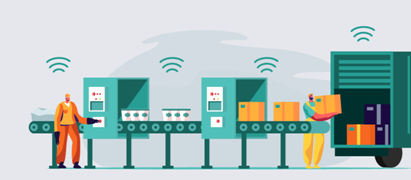
Alkhadim Tools
A simple and effective RFID traceability solution to manage your fleet of materials, tools, equipment, parts, components and stocks. ALKHADIM RFID is a digital traceability solution that uses RFID and technology to allow you to trace and track your materials, your tools, your equipment… and manage them in real time on a secure portal. The data is directly accessible on your PC, tablet, smartphone. In just a few clicks, our customers manage their entire fleet of equipment, their equipment, their products, their stocks, etc., regardless of the number of users, establishments, construction sites, rotations, parts or tools to manage, and whatever their brand. ALKHADIM RFID gives you real-time visibility on your equipment, its location and your inventory, wherever you are, thanks to its mobile app. You always know where your equipment is, what its status is and what quantities you have. Create and update all nomenclatures relating to the management of Tools: the nomenclature of families, the nomenclature of locations, the nomenclature of organizational entities, the nomenclature of asset states and the nomenclature of brands and the nomenclature of accounting accounts . Management of inventory periods Automatic identification of Tool movements. Management of the exit and reform of Tools with the possibility of logging its movements for possible research or consultation subsequently; Possibility, during the inventory, to edit the Tools sheet (updating information including the condition of the asset), to enter new acquisitions and to instantly identify inventory discrepancies. Possibility at the end of the inventory to synchronize the Terminal with the server to automatically update the database with the generation of inventory states: state of discrepancies, transfers, new acquisitions, degradation, etc. These states must be logged and consulted later. Possibility of editing Tool tracking states: inventory register, output status, movement status, etc.); Very comprehensive functionalities for all sectors: industry, energy, maintenance, etc. Traceability of industrial equipment, construction site equipment, portable power equipment, lifting equipment, electrical equipment, medical equipment, health equipment and products, small tools, technical parts, vehicles, containers, containers, pallets, crates, PPE, etc. Collection of multiple information: unique identification of equipment, serial number, movement history, status, status, etc. Assignment: establishment, construction site, person, team, vehicle, service, etc. Location Management of periodic checks and maintenance with alerts Stock and inventory management

Alkhadim – Training 2023
The software allows users to follow all the stages of the PD one after the other, to follow the budget, its distribution, and to produce a multi-annual history of the PD in the establishment. During this initial self-positioning, staff who re-evaluate (upwards or downwards) one of the items in the professional reference framework must justify it in the comments section for an evaluation. he must also indicate the priority points of professional development that he wishes to work on during the coming year (in connection with the complete evaluation). manages all parts relating to personnel, budget management and training: – Individual auto positioning Entry/Modification of grids. Personnel monitoring (consultation of personnel grids, entry of CDP remarks, filtering of results). Global statistics. – TALIS survey Handover companion (opening, closing). Deployment of the TALIS survey (dynamic form). Comparison of responses over several years. – Training Enter/Modify training courses. Validation of training registration requests. Consultation of participants for each training. consult staff training requests. Validate or refuse training requests with a CDP remark. – Budget Definition of the forecast budget. Monitoring funded by PD element, by category, by staff, by year with budget use statistics. – Evaluation of training Evaluation companion (opening, closing). Deployment of evaluation companion (dynamic form). View the evaluation results for each training course.
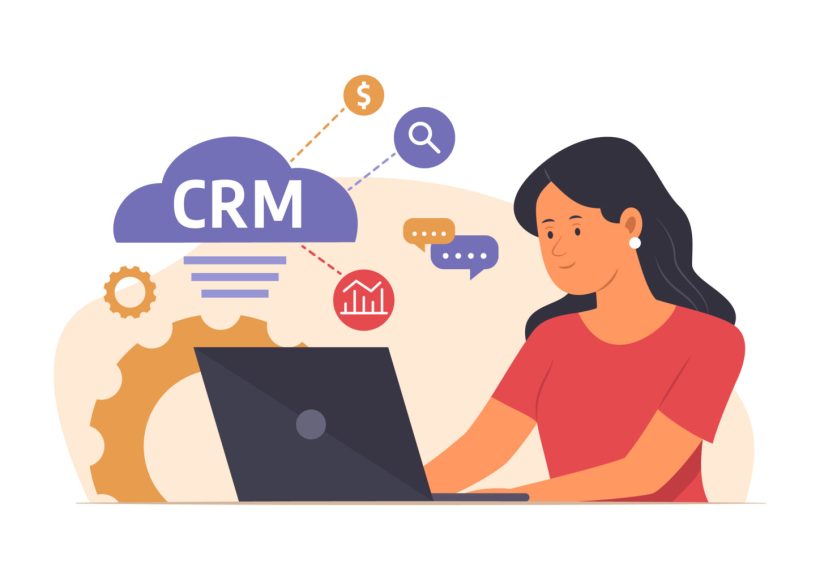
the CRM software market
Figures: Between 2017 and 2018, the revenues of CRM software publishers increased by 15.6% to $48.2 billion, when all business software recorded an increase of 12.5%. And it is Cloud offers that are growing the fastest (20%), representing 72.9% of CRM spending. But CRM solutions are also those which recorded the strongest growth over the period at just over 15%. In comparison, the global business software market grew 12.5% to $193.6 billion in 2018. And if the CRM market therefore continues to grow at a sustained pace, this is even more true for cloud-based or SaaS offers. Thus, 72.9% of expenses devoted to CRM last year were in SaaS mode. Gartner already predicts that this share will reach 75% in 2019. “Cloud growth declined slightly in 2018, but remains strong at 20% and significantly higher than the overall growth rate of 15.6% for CRM,” nevertheless notes Julian Poulter, senior director analyst at Gartner. For comparison, the increase in cloud-based CRM was 27% in 2015. Salesforce undisputed leader – Thanks to the dynamic adoption of the cloud, the number one CRM recorded nearly 24% growth in 2018, generating 9.4 billion in turnover thanks to its customer relationship management offers .
Business tracking software
For any company, setting up commercial monitoring is necessary to optimize its processes and ensure good customer care. This commercial monitoring of customers makes it possible to support a prospect from the first contact until the conclusion of the sale and then during the customer loyalty process. Several tools can then be used to increase efficiency. What is commercial monitoring? When a company gets in touch with a prospect, a commercial follow-up process begins. It is in fact a process aimed at monitoring the progress of the sale, but also the relationship with the customer . All information relating to the customer journey is therefore centralized and analyzed using commercial monitoring techniques. Dedicated software can then be used and will help members of the sales team, but also customer service, to: Collect and organize customer data Manage contacts Personalize exchanges Automate actions Why is it essential to carry out this type of monitoring? Customer commercial monitoring is essential to any business today. It allows you to memorize all the stages of the sale as well as the different exchanges that took place. Thus, it is possible for teams to trace the entire history of the customer relationship and therefore to intervene in a much more personalized way. This individualized operation makes it possible to attach more importance to customer relations and therefore to generate more satisfaction in general. The image of the company can only be improved, but it is also the turnover which will do better. Today, all companies therefore set up a customer commercial monitoring system , regardless of their sector of activity or their size. Some methods are simply more effective than others and the use of suitable software is often the most recommended approach.

Notaries: priority for training and digitalization of procedures
Notaries, currently numbering 1,822 spread across Morocco, are working hard to change the regulations, in this case Law 32-09, relating to the organization of the profession of notaries, and the adapt to the different socio-economic changes in the country. In addition to the various gaps in the law (see interview below), the profession will have to focus, among other things, on training. This was stated by Abdellatif Yagou, president of the National Order of Notaries, during the Congress of Moroccan Notaries, which was held from March 18 to 20 in Marrakech, under the theme “The Kingdom of Morocco and Euro-African cooperation-notariat: a force of proposal”. “Several projects have been carried out over the last three years, such as the creation of a national center for professional and continuing training in Casablanca as well as a center for scientific research and digital and physical documentation,” he pointed out. In addition to this, regional training centers should be set up in order to ensure that all notaries in the country enjoy their rights to unified training. With the aim of merging contracts, the national order intends to set up a search engine which brings together all the models in both languages (Arabic and French). It also plans to organize scientific meetings with the aim of exchanging experience, expertise, discussions and proposals. In addition to this, regional training centers should be set up in order to ensure that all notaries in the country enjoy their rights to unified training. With the aim of merging contracts, the national order intends to set up a search engine which brings together all the models in both languages (Arabic and French). It also plans to organize scientific meetings with the aim of exchanging experience, expertise, discussions and proposals.

Digital technology, a technology that has changed the profession of notaries
Currently, notaries are using new technologies to optimize their functions. Several systems have been put in place, such as the dematerialization of authentic documents. Changes have been made to the reception of documents and their signatures. Notarial digital tools Three solutions have been put in place to achieve digitalization in the notary professions. Digital identity: this authentication tool was created in September 2015. Each identifier is different for each notarial profession. Thanks to this system, a bridge between notary professionals is established. In this case, it facilitates uses, particularly in terms of mobility. The real key: it has the same shape as a USB key. It allows the notary to electronically sign a deed and put his seal on it. The electronic signature must comply with the EIDAS (Electronic IDentification and electronic trust services) regulation. The real network: this system was designed to host the tools and services reserved for notaries and their colleagues. The dematerialization of notarial documents The notarial deed can be signed electronically from 2008. The deeds can then be certified remotely via videoconference. This facilitates procedures and allows notaries to increase their productivity. In addition, the documents are more secure, because the paper formats will be converted into an electronic file. The value of digital documents is the same as that of documents written on paper. Documents are recorded in a secure electronic central recorder. Only your notary and his successors can access it if necessary. They will be kept for 75 years or 100 years if there is a vulnerable person. Then, they will be transmitted to the national archives. Since January 1, 2018, the services dealing with land registration have required notaries to send certain documents in electronic form. Several acts are concerned, including acts of sale and real estate certificates after death. The advantages of dematerialization on customer relations Digitalization facilitates communication between the notary and his client. The latter can send him the necessary documents in just a few clicks. In this case, the notary and clients can save time and limit travel. Carrying out procedures also becomes faster. Clients can make an appointment online with a notary using this system. The customer also has the right to request an authentic copy of a paper document if he wishes. A charter has been drawn up to guarantee the security of this solution. Its goal is to develop digital sites and encourage customers to use it.
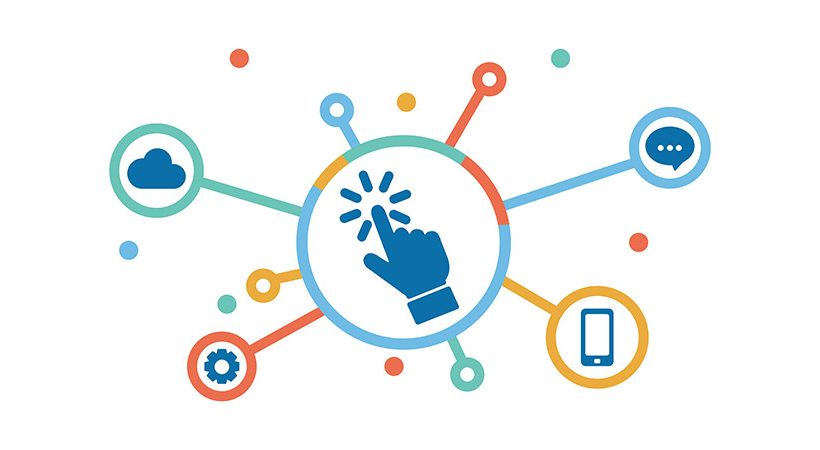
What is the definition of digitalization?
Digitization is defined as the conversion of information from one format to another. This process is used in many industries, including the recording and distribution of music, files and sounds. Objects are represented in digital format by generating a series of numbers. As the term suggests, digitalization allows us to store and share more information in a more convenient way. It is a useful tool in many fields, such as the entertainment industry. This article will define the different types of data that are stored in digital form. What is digitalization? It is the process of converting physical objects into digital format. This process does not affect the original document, which is the common definition of the term. Digitalization has been around for centuries. Gottfried Leibniz first introduced the concept of digitalization in 1679. It has developed over the years and is now an integral part of any business. This trend is not limited to new technologies. The term refers to the changing nature of the business world. Organizations must evolve to stay relevant. Digitalization involves the use of information technology to improve business processes and create new ways of connecting with customers. Digitalization is changing the way businesses interact with their customers and internal data. New business models can be created from the data. While all of these factors are important, embracing change is essential if you want to stay ahead of the competition. With digitalization, you must be open to new opportunities. You must be willing to adapt or you will lose a valuable competitive advantage. So how to digitalize your business? By implementing the right strategy, you can prepare for a more profitable future. Defining digital is an important step that businesses must take to survive in the 21st century. You can find the definition proposed by Larousse here. It is the process of converting analog technology into digital form. This includes converting map files to digital format. It also involves scanning text and other information into a digital format. In fact, the whole world is becoming more and more connected. The company’s customers will be able to interact with the data through different channels. Digitization involves converting non-digital data into a digital format. Information converted into these formats will be used in workflows, business processes and enterprise systems. This is a labor-intensive process, but it will help increase the overall productivity of the business. By harnessing the power of digital information, organizations can benefit from better revenue and value-added information. Digitalization is not only for organizations, but also for ordinary people.
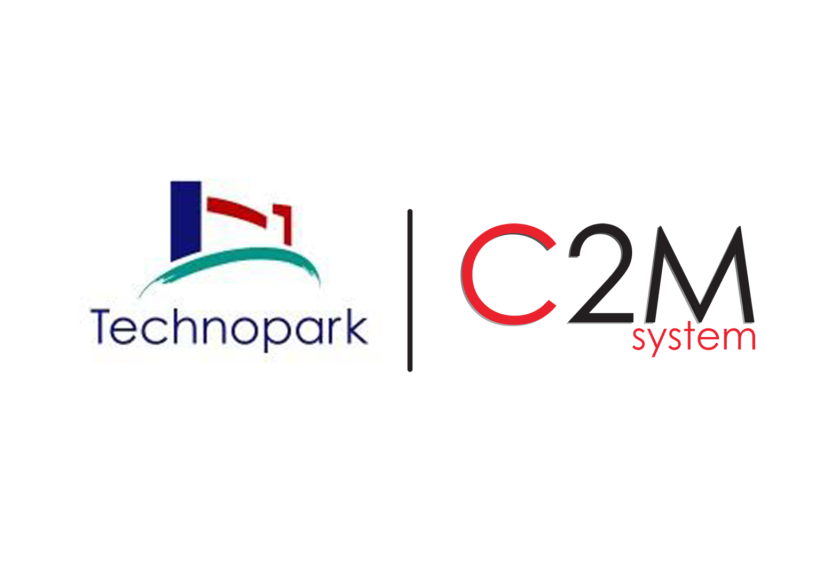
Start ups of the month Technopark Casablanca
Every month, Technopark presents 4 innovative start-ups supported by the Technopark network. The administrator of C2m Mr. Ibrahim El Moussaoui is among the 4 start-ups of April on the subject of: ALKHADIM is the 360 management software best suited to all types of activities and structures of all sizes Technopark Casablanca
